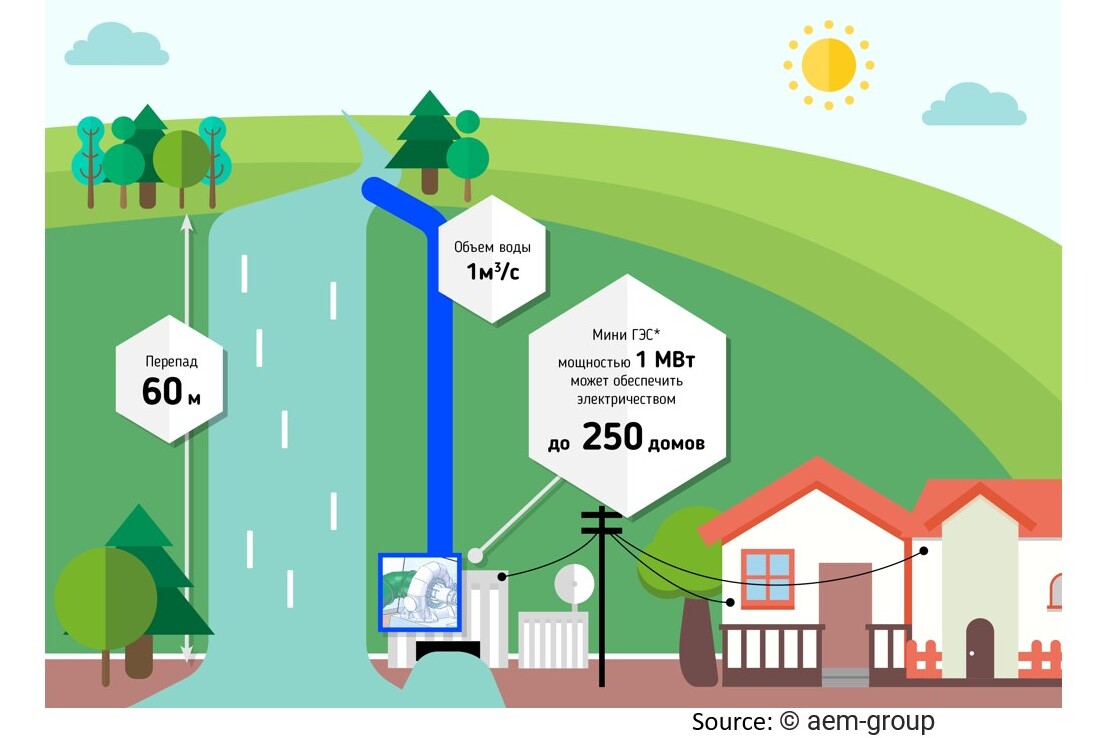
Small hydroelectric power plants are designed to convert the water energy of small rivers and streams into electrical energy for the needs of the consumer.
A small hydroelectric power plant is an environmentally friendly source of electricity that does not require the constant presence of maintenance personnel during operation. The mini hydroelectric power station is designed to operate on an autonomous consumer isolated from the energy system.
Design and principle of operation . The principle of operation is similar to the functioning of large power plants. The difference lies only in the power of the installations and the amount of electricity generated.
The pressure of water can be created by the normal course of a reservoir or formed by the construction of a dam or other structure. For example, an artificial height difference can be created, which allows, due to gravity, to increase the flow of water. Due to gravity, the hydraulic turbine will rotate faster, which means that the rotation of the generator will also accelerate. In some cases, two methods of creating pressure can be used simultaneously.
Under the action of pressure, water is directed in the required direction, where the turbine is installed. Water masses fall on its blades, which transfer their energy to them. The source of water energy can be rivers and rivers, elevations located on all kinds of water discharges, pipelines for various purposes, and so on. This water energy is converted by a hydro turbine into a rotational movement. Further, passing through a gearbox or other mechanical transmission, this energy is directed to the generator shaft.
Small hydroelectric power plants can be used everywhere. The only limitation of their use can be the absence of rivers and streams. If a small river flows near the house, including dams, high-altitude differences in water discharges, then this means that in this area all conditions have been created for mounting a mini-hydroelectric power station.